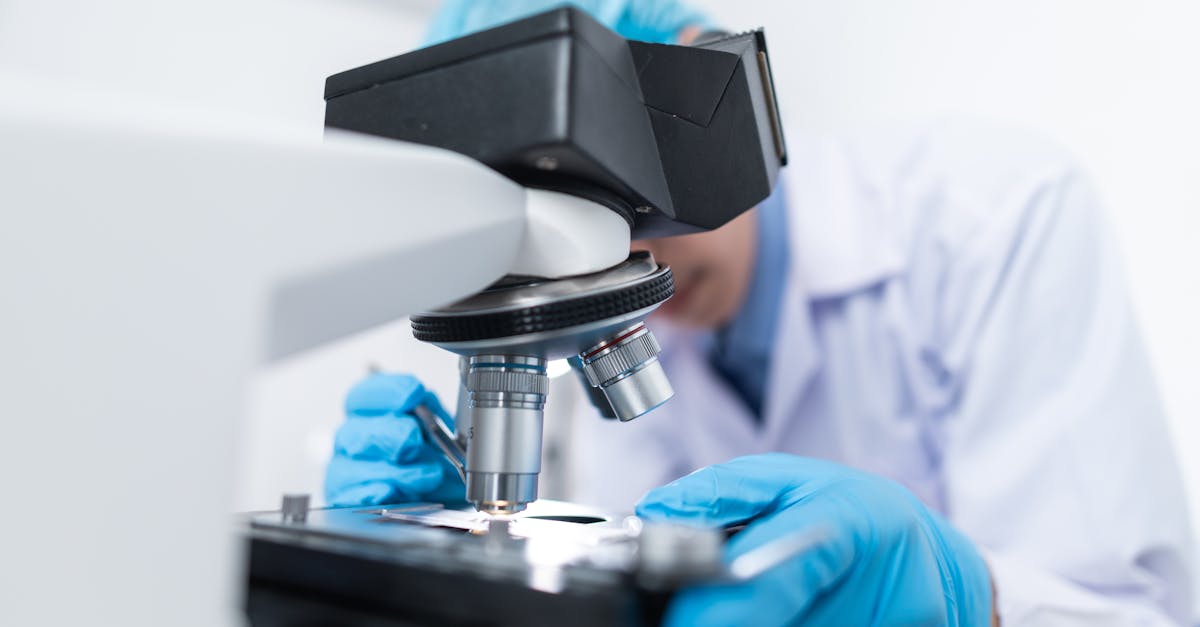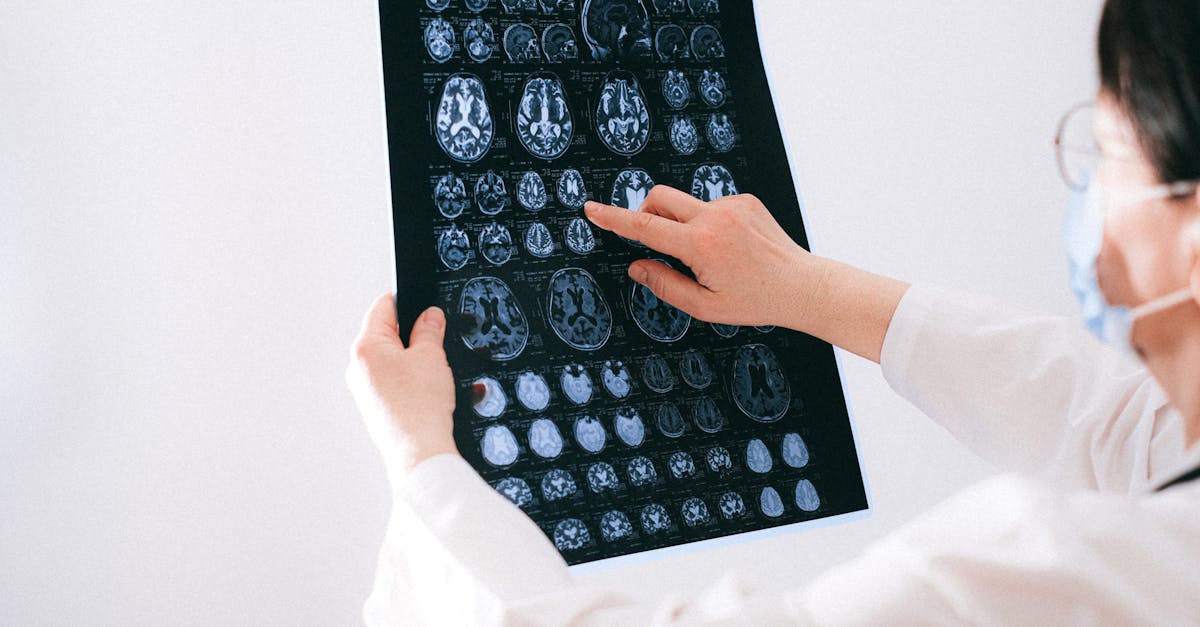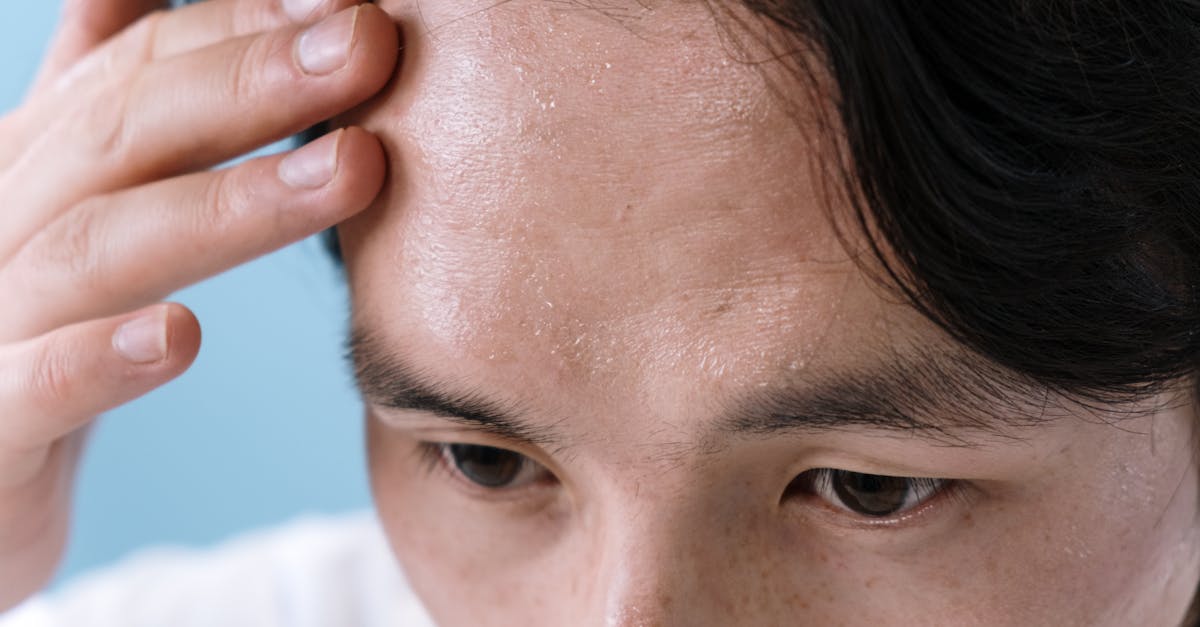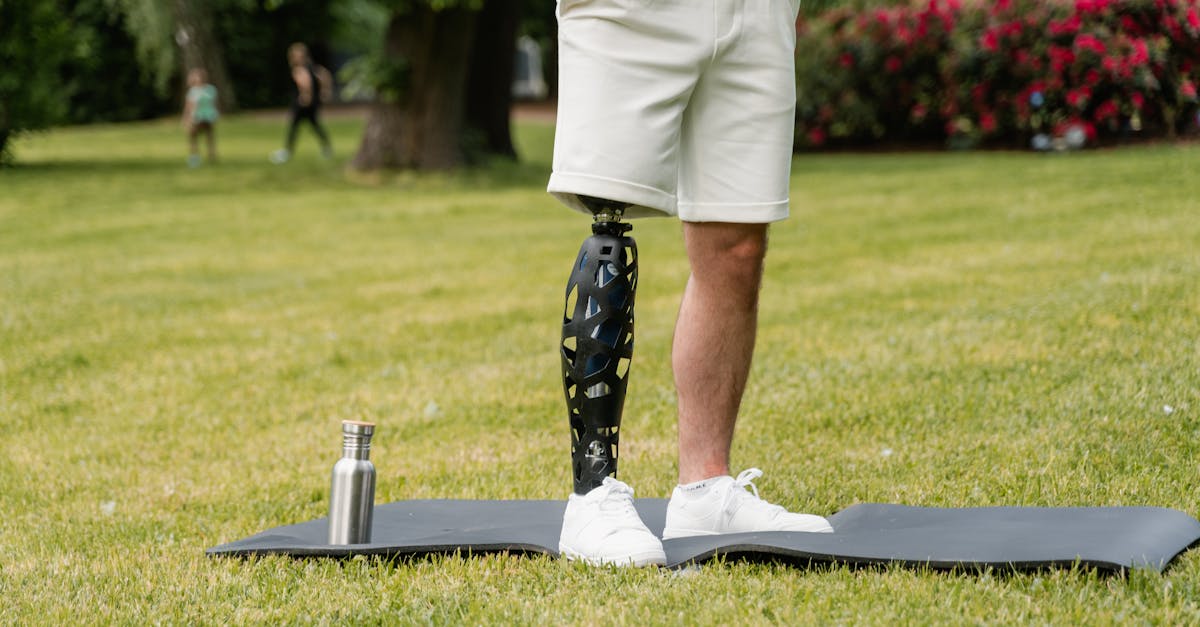Struggling with Meniere’s disease and the challenges of dizziness? Pulse Align can help you regain your balance.
In Short: Meniere’s disease causing you dizziness and vertigo? Discover a balanced approach that addresses these complex challenges through personalized therapies. Pulse Align focuses on innovative methods to support natural remedies for dizziness and nausea, along with specialized vertigo exercises tailored to individual needs. By enhancing your overall well-being, you can move with more ease and confidence. Reclaim your health and wellness at Pulse Align Clinics. Book your appointment today!
Are you struggling with dizziness from Meniere’s disease?
Dealing with Meniere’s disease can be incredibly challenging, but at Pulse Align, you can explore the comprehensive benefits that aid in managing symptoms like vertigo, dizziness, and balance problems. With a focus on innovative treatments and natural remedies for dizziness and nausea, Pulse Align provides personalized care plans that encompass targeted vertigo exercises and psychological support, freeing you from the confines of dizziness and anxiety. Experience how effective strategies such as BPPV exercises at home and functional neuromuscular recalibration can help improve your overall well-being and posture, leading to increased stability and comfort in daily activities.

“`html
Rediscover Your Balance with Pulse Align: A Gentle Approach to Well-Being
Are you looking to enhance your posture improvement and experience the benefits of neuromuscular recalibration? You’re not alone. Many individuals find themselves seeking effective ways to achieve balance and well-being. At Pulse Align, we believe that the body has an incredible capacity to heal itself, and we are here to help you navigate that journey.
Understanding the Pulse Align Approach
At Pulse Align, we offer a unique perspective grounded in the understanding of muscle tone symmetry and gentle stimulation. Our approach does not aim to diagnose or specifically treat any condition; rather, it facilitates the body’s natural ability to regain its balance and functionality. By encouraging optimal posture and enhancing neuromuscular health, we help clients experience a renewed sense of vitality and harmony in their daily lives.
The Benefits of a Holistic Approach
Choosing a holistic method like Pulse Align means embracing the body’s wellness potential. Our techniques not only focus on physical posture but also contribute to your overall comfort and well-being. Clients often share profound transformations in their daily experiences, noting improvements in their posture and reductions in discomfort, thanks to our emphasis on natural healing. This empowering environment fosters resilience and supports your wellness journey.
Client Experiences
Many individuals have already discovered the positive changes facilitated by Pulse Align. Clients have expressed how they have been able to improve their posture naturally, increase flexibility, and feel a greater connection between their mind and body. One client shared, “I never knew I could feel this balanced and strong. The supportive environment and personalized care truly made a difference.”
Ready to Experience the Benefits of Pulse Align?
Are you excited to embark on your wellness journey with Pulse Align? We invite you to learn more about how we can assist you in your path to improved functioning and overall comfort. Whether you’re located in Montreal, La Prairie, Terrebonne, Chicoutimi, Charlesbourg, Saint-Jérôme, Châteauguay, Sainte-Marie, Les Escoumins, Granby, or Panama City, find a convenient location and consider booking a consultation to explore how our gentle methods can support your health and well-being. Remember, at Pulse Align, we complement your healthcare services, enhancing your journey toward optimal wellness.
Dealing with Meniere’s Disease? Explore the Benefits of Pulse Align
- Holistic Approach: Addresses both physical and emotional aspects of Meniere’s disease.
- Personalized Care: Tailored treatment plans designed for individual needs.
- Gentle Techniques: Non-invasive methods to restore balance and relieve discomfort.
- Improved Posture: Focus on posture correction for enhanced overall health.
- Community Support: Access to local support groups for shared experiences.
- Educational Resources: Empower clients with knowledge for self-management.
- Neuromuscular Stimulation: Gentle stimulation to encourage natural healing.
- Resilience Building: Fosters a supportive environment for long-term health.

Are you grappling with the unpredictable symptoms of Meniere’s disease, including dizziness and vertigo? Finding the right approach to restore balance and improve quality of life can be a challenging journey. Thankfully, Pulse Align offers a holistic framework focused on neuromuscular health and posture improvement, aiming to alleviate the discomfort and empower individuals facing these balance problems. This article will explore the comprehensive benefits of Pulse Align’s practices in managing Meniere’s disease, from effective vertigo treatments to targeted dizziness home remedies.
Understanding Meniere’s Disease
Meniere’s disease is characterized by intermittent episodes of severe vertigo that can lead to discomfort, anxiety, and disrupted daily life. Understanding the dizziness causes associated with this condition—including vestibular neuritis and labyrinthitis—is crucial for implementing effective management strategies. Pulse Align recognizes the need for a personalized approach that addresses the individual’s specific challenges, including dizziness when standing up suddenly.
Effective Treatment Strategies at Pulse Align
Holistic Recalibration Techniques
Pulse Align specializes in holistic recalibration techniques that promote symmetry and natural balance within the body. Engaging in trunk exercises emphasizes core strengthening and posture correction, vital for those battling dizziness challenges. By incorporating these methods, individuals can experience reductions in episodes of vertigo, allowing them to regain confidence in their movements.
Natural Remedies and Exercises
Pulse Align advocates for integrating natural remedies for dizziness and nausea, focusing on nourishment, hydration, and specific vertigo exercises tailored for each client’s needs. BPPV exercises at home can effectively enhance vestibular stability, which is essential for maintaining balance and minimizing anxiety linked with dizziness symptoms.
Professional Guidance and Support
The expertise of Pulse Align practitioners ensures that clients receive comprehensive support throughout their wellness journey. By collaborating with healthcare providers, individuals can benefit from tailored management strategies, including shockwave therapy and physical exercises designed to alleviate discomfort. The practice empowers clients by offering educational resources on managing dizziness after head injury and recognizing causes of dizziness in the elderly.
Calling You to Action
Ready to reclaim your health and improve your quality of life while managing Meniere’s disease? Take the first step towards revitalizing your well-being by booking a consultation with Pulse Align. Our clinics, equipped with the latest in holistic health practices, are conveniently located in areas such as Montreal, La Prairie, and even Panama City. Discover personalized exercise plans designed specifically for you and experience the difference that a holistic approach can make.
Comprehensive Benefits of Pulse Align for Meniere’s Disease
| Aspect | Pulse Align Benefits |
|---|---|
| Symptom Management | Holistic techniques alleviate vertigo and dizziness. |
| Personalized Treatment | Custom plans addressing specific needs of each client. |
| Non-Invasive Techniques | Utilizes gentle neuromuscular stimulation for balance. |
| Holistic Healing | Integrates mind and body support for emotional wellness. |
| Community Support | Access to local support networks and shared experiences. |
| Education and Empowerment | Provides knowledge-based strategies for self-management. |
| Long-Term Stability | Aims for sustainable results ensuring lasting balance. |

Client Testimonials on Their Wellness Journey with Pulse Align
Clients dealing with Meniere’s disease have found sanctuary at Pulse Align, where the journey to wellness resonates beyond traditional methods. Many testimonials echo the sentiments of healing through this innovative approach, which recognizes and supports the body’s natural ability to recalibrate and restore balance. One client from La Prairie shared, “After a few sessions, I noticed a significant improvement in my balance. The gentle techniques at Pulse Align helped me reconnect with my body, something I thought I had lost forever.”
In Mont-Royal, another client expressed gratitude for the caring environment. “The team at Pulse Align not only understands Meniere’s, but they also empower me to take charge of my health. The personalized care has changed my life,” she remarked, emphasizing how the program tailored to her needs has resulted in remarkable improvements in her overall health.
Residents in Terrebonne have also thrived, sharing how the holistic techniques utilized at Pulse Align have led to noticeable changes. “I feel lighter, more engaged, and less troubled by my symptoms,” one client reported. This reflects the sentiment echoed by many, who find that the methods employed here support their journey toward recovery effectively.
For clients in Les Escoumins and Charlesbourg, the impact of Pulse Align has been nothing short of transformative. “I was hesitant at first, but now I can participate in daily activities without the fear of vertigo ruling my life,” stated a long-time client. Through various tailored treatments and an emphasis on community support, it’s no wonder clients feel empowered towards natural healing.
The positive feedback continues with clients from Deux-Montagnes sharing how holistic support has greatly enhanced their well-being. In the serene environment of Pulse Align, many have discovered that improving their balance is not just physical but also encompasses emotional wellness, making this experience all the more profound.
In both Sainte-Marie and Chicoutimi, individuals have praised the integration of modern techniques with personalized attention, further showcasing how Pulse Align stands apart in its offerings. A client noted, “Receiving treatment here was a breath of fresh air—I finally felt understood and cared for, which was crucial in my journey towards regaining balance.”
With locations extending to Châteauguay, Saint-Jérôme, and even Panama City, the reach of Pulse Align facilitates access to these transformative services. Clients have come to see Pulse Align as more than just a treatment center; it is a partner in their health journey, working alongside their existing healthcare teams to ensure comprehensive support and lasting well-being.
Experience the benefits of Pulse Align for yourself. Discover more about our personalized services and how we can assist you on your wellness journey by visiting our Our Clinics page.
Are you struggling with dizziness and vertigo from Meniere’s disease? Pulse Align offers a balanced approach designed to restore equilibrium and alleviate discomfort for individuals facing these challenges. Our innovative methods focus on natural remedies for dizziness and nausea, enhancing well-being through personalized vertigo exercises and support.
Understanding the Pulse Align Approach
At Pulse Align, we create a nurturing environment that promotes muscle tone symmetry and facilitates natural balance. Through gentle stimulation, we encourage the body to return to its inherent state of harmony. Clients often report feeling more stable and less discomforted after experiencing our innovative techniques.
The Holistic Benefits of Gentle Stimulation
Choosing a holistic approach unveils numerous advantages. We emphasize the body’s innate ability to heal and maintain equilibrium, fostering an environment of support and empowerment. Clients have frequently shared journeys of improvement, highlighting enhanced posture, reduced tension, and a greater sense of comfort.
Client Experiences
Many of our clients express gratitude for the transformations they’ve experienced at Pulse Align. Our gentle neuromuscular stimulation techniques have been noted to manage vertigo episodes effectively and promote a sense of well-being that enhances daily activities. Positive community connections further enrich the experience.
Ready to Experience Pulse Align?
We invite you to embark on your wellness journey with personalized consultation options tailored to your individual needs. Whether in cities like Montreal, La Prairie, or even Panama City, Pulse Align complements any ongoing healthcare services.
Our Mission
At Pulse Align, our mission is to deliver evidence-based, client-centered treatments that address the underlying causes of pain and dysfunction. By integrating advanced techniques and technologies, we strive to empower each person to take control of their health, ensuring a high standard of care, lasting relief, and an improved quality of life.
For more information on our approach and available services, visit www.pulsealign.com and find a location near you here: https://pulsealign.com/our-locations/.
Transform Your Life with TAGMED’s Advanced Spinal Decompression Therapy
TAGMED offers a non-surgical solution designed specifically to address moderate-to-severe disc issues, such as herniated discs, bulging discs, and spinal stenosis. Through the use of advanced spinal decompression therapy, this specialized technique gently reduces pressure on the affected discs and nerves, enhancing mobility, alleviating pain, and supporting your body’s natural healing process. If you’ve reached a plateau with other treatments, discover how TAGMED’s evidence-based approach can help you resume an active, comfortable life.
Have you tried conventional treatments and still struggle with persistent back pain due to a severe disc condition?
Mechanism of Action
TAGMED’s neurovertebral decompression applies a controlled, progressive traction force to the spine. This method increases the space between vertebrae, effectively reducing pressure on intervertebral discs and nerve roots. As the space expands, fluid circulation in the targeted areas improves, allowing better nutrient transport and hydration of the discs. This physiological change helps lower inflammation and relieve pain, offering a reliable, non-invasive solution for individuals suffering from chronic back pain or neck pain.
Specific Benefits
This non-invasive approach effectively alleviates chronic pain and symptoms linked to conditions such as degenerative disc disease and foraminal stenosis. By reducing pressure on nerve structures and optimizing fluid circulation around the discs, TAGMED’s spinal decompression therapy can significantly speed up recovery and enhance the quality of life for a wide variety of patients seeking relief from persistent discomfort.
Comparison with Other Treatments
When compared to commonly used treatments like pain medications, corticosteroid injections, or surgical options, TAGMED’s neurovertebral decompression stands out. Unlike traditional physiotherapy, this technique involves no invasive interventions, minimizes medication-related risks, and can provide a faster path to recovery. TAGMED’s approach is a compelling choice for those seeking safer, evidence-based alternatives to manage conditions such as sciatica and facet syndrome.
Case Studies or Testimonials
Real-world examples of patients who have benefited from TAGMED’s neurovertebral decompression showcase the transformative power of this therapy. Many clients have experienced lasting pain relief, allowing quicker resumption of their daily activities. For instance, one patient noted a significant reduction in discomfort and a decreased reliance on pharmaceuticals after just a few sessions. Such firsthand accounts illustrate the tangible results and practical advantages of this therapeutic approach.
In summary, TAGMED’s spinal decompression therapy not only addresses the root causes of chronic pain but also empowers individuals to regain their lives, free from the limitations of their conditions.
Unlock Your Wellness Potential with Pulse Align
If you’re facing challenges related to Meniere’s disease, the comprehensive benefits of Pulse Align are worth exploring. This innovative approach is designed to enhance posture correction, alleviate discomfort, increase mobility, and ultimately foster your overall well-being. By gently promoting neuromuscular recalibration, Pulse Align empowers your body to thrive naturally, allowing you to rediscover comfort and balance.
Clients frequently share their positive experiences, emphasizing how Pulse Align has helped them reclaim control over their lives. Many have reported improvements in overall posture and a reduction in tension, transforming their daily routines into more enjoyable, fulfilling experiences. The supportive environment at Pulse Align ensures that you feel understood and assisted on your personal wellness journey.
Are you ready to take the next step in your wellness journey? Discover the Pulse Align difference today and explore how our approach can transform your life. Schedule your consultation now and embark on a path that prioritizes holistic health and natural pain relief. Your journey toward a healthier, more balanced you starts here!

Do you suffer from a chronic condition that responds little or not at all to conservative treatments?
If you’re seeking effective, gentle solutions to improve your overall well-being, look no further than Pulse Align. This innovative wellness service employs a non-invasive method designed to help restore the body’s natural balance and posture through gentle, imperceptible pulses. By focusing on a holistic approach, Pulse Align promotes muscle tone symmetry, which may lead to reduced discomfort and improved functional balance in your daily life.
It’s important to note that Pulse Align does not directly address pain or specific conditions. Instead, the emphasis is on supporting the body in its natural recalibration process. This often results in amazing improvements that foster an increased feeling of comfort and enhanced posture, making clients feel more at ease in their bodies and activities. Rather than seeking symptom relief directly, Pulse Align nurtures the body’s inherent ability to find its equilibrium.
Clients have shared inspiring testimonials highlighting their notable improvements after engaging with Pulse Align. Many individuals have experienced enhanced comfort while reporting reduced tension in areas such as the neck and back. Clients have mentioned a refreshing sense of stability and balance, transforming their lives positively as they journey toward holistic wellness. The focus on personalized care at Pulse Align ensures that each client walks away feeling revitalized and empowered.
Ready to explore how Pulse Align can assist you on your wellness journey? Visit the Pulse Align website to learn more about our services, discover nearby locations in cities like La Prairie, Mont-Royal, Terrebonne, and many more. You can easily book a consultation for yourself or your loved ones. Remember, Pulse Align is designed to complement your existing healthcare services, creating a supportive network that fosters well-being for the entire family.
Our state-of-the-art technology facilitates the restoration of normal muscle tone symmetry, significantly reducing joint tension and enhancing overall comfort. Safe for individuals of all ages, including young children and pregnant women, our personalized services are crafted to meet each client’s unique needs. Together, let’s unlock the body’s potential for natural healing and a more balanced, harmonious life. To learn more about our services and book an appointment, visit our website: Pulse Align.
Frequently Asked Questions
Vértigo
¿El VPPB es frecuente?
Sí, el Vértigo Posicional Paroxístico Benigno es la causa más frecuente, debido al desplazamiento de cristales en el oído interno.
Can medications relieve vertigo?
Some medications (anti-vertigo or anti-nausea drugs) may help, but treating the underlying cause is essential.
Les médicaments peuvent-ils soulager les vertiges ?
Certains médicaments (anti-vertigineux, antiémétiques) peuvent aider, mais c’est le traitement de la cause qui est essentiel.
Les acouphènes accompagnent-ils souvent les vertiges ?
Dans la maladie de Ménière, les acouphènes (bourdonnements) sont courants. D’autres causes de vertiges n’impliquent pas forcément des acouphènes.
What should I do in case of sudden vertigo?
Sit or lie down, fix your gaze on a stable point, avoid abrupt movements, and consult a doctor if it persists.
Can I drive with vertigo?
It’s not advisable to drive during a vertigo episode as it compromises safety.
Is the Epley maneuver effective for BPPV?
Yes, it repositions inner ear crystals, relieving vertigo in most cases.
La manœuvre d’Epley est-elle efficace contre le VPPB ?
Oui, cette manœuvre permet de repositionner les cristaux dans l’oreille interne, soulageant les vertiges dans la plupart des cas.
Le café ou l’alcool aggravent-ils les vertiges ?
Une consommation excessive d’alcool ou de caféine peut aggraver les vertiges chez certaines personnes sensibles.
Les infections de l’oreille peuvent-elles provoquer des vertiges ?
Oui, une infection ou une inflammation de l’oreille interne (névrite vestibulaire) peut provoquer des vertiges soudains et intenses.
Zoé Rousseau believes that knowledge is the most powerful step toward healing—and she’s here to illuminate the path forward for anyone facing the challenges of vertigo. At Pulse Align, Zoé not only highlights the latest breakthroughs in neuromodulation and non-invasive health technologies but also translates complex research into practical, everyday guidance. Her approach is grounded in empathy and fueled by a genuine drive to help readers find balance, both literally and figuratively. From exploring advanced treatments to sharing firsthand patient stories, Zoé’s heartfelt advocacy ensures that no one has to face the spinning world of vertigo alone.
Medical Disclaimer
The information and advice provided on this site do not replace the advice, diagnosis, or treatment of a healthcare professional. Please note that the author of this article is neither a doctor nor a specialist in a medical specialty as defined by the Collège des médecins du Québec. Manual medicine, functional medicine, and sports medicine as described on this site exclude any medical treatment or diagnosis made by a doctor or medical specialist. Always consult your doctor for any medical questions. For more details, please read our complete Legal Notice.




